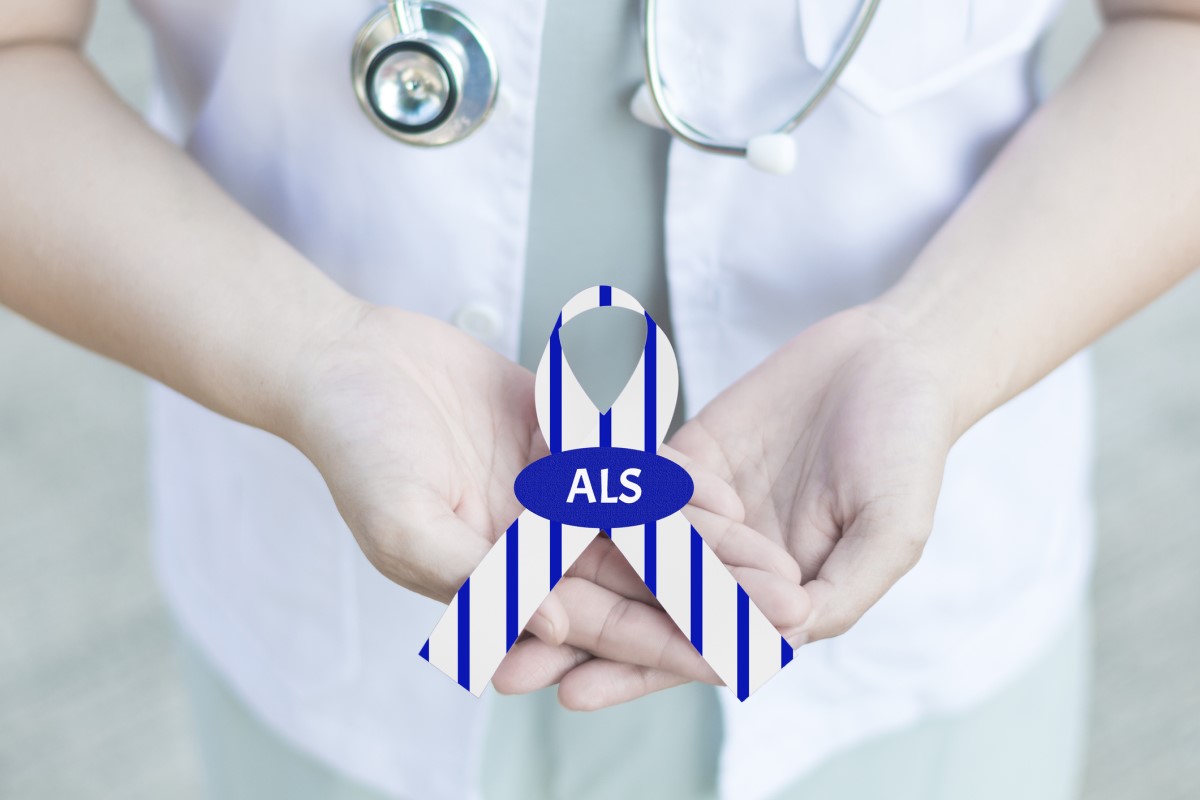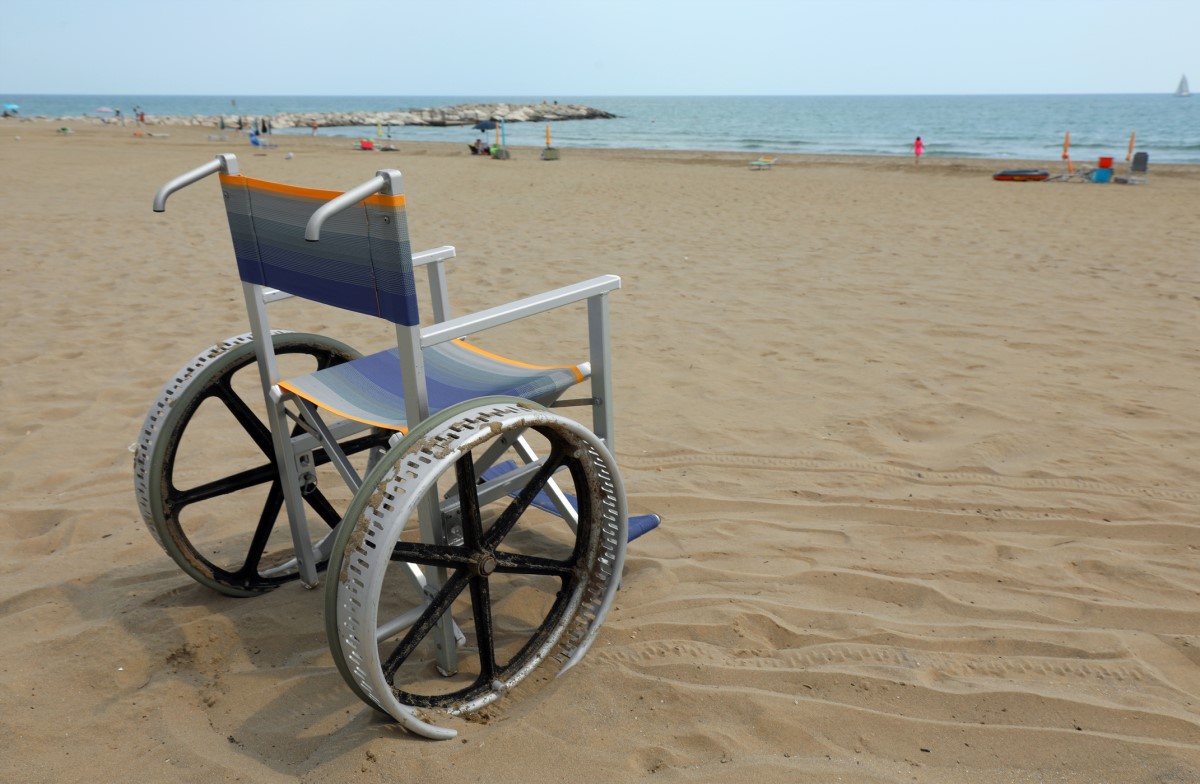- neurologiepropraxi.cz - Amyotrophic lateral sclerosis, Petr Kaňovský et al. Special Neurology 2020, Volume I. - Extrapyramidal and neurodegenerative onecmonení
- sciencedirect.com - Amyotrophic lateral sclerosis
- sciencedirect.com - Genetic causes of amyotrophic lateral sclerosis: New genetic analysis methodologies entailing new opportunities and challenges
- mayoclinic.org - ALS - diagnosis and treatment
Amyotrophic lateral sclerosis (ALS): what are the first symptoms and causes?

Amyotrophic lateral sclerosis is the most common degenerative disease of the motor nerve cell. It is a neurodegenerative disease.
Most common symptoms
- Speech disorders
- Muscle Pain
- Spirituality
- Constipation
- Depression - depressed mood
- Defence
- Mood disorders
- Muscle weakness
- Muscle cramps
- Fatigue
Characteristics
Amyotrophic lateral sclerosis - ALS
In addition to ALS and its various variants, the following diseases belong to this group:
- spinal muscular atrophies (SMA)
- bulbospinal muscular atrophy (BSMA)
- post-polio syndrome
Motoneurons in the anterior horns of the spinal cord and in the brainstem are mainly affected.
Motoneurons are large nerve cells in the spinal cord that are reached by a nerve pathway from the brain, specifically from the cerebral cortex. The motoneuron is where the so-called motor unit begins.
The motor unit consists of a motoneuron and a single muscle fiber that innervates it.
A connection is made between the nerve and the muscle - a synapse.
This synapse is called a neuromuscular disc.
All of these components are necessary to carry out every movement we make.
The nerve cells (neurons) of the corticospinal pathway and the neurons of the pyramidal pathway (both nerve pathways are responsible for controlling movement - motor control) are also affected by degeneration.
Only the motor neurons of the orbicularis oculi and sphincters (responsible for triggering urination and releasing stool) are spared.
ALS is not a common disease.
It occurs in about 5 cases per 100,000 population per year. It is more commonly diagnosed in men than in women. The peak incidence is later in life, in the 6th to 7th decade. However, much earlier onset is not uncommon. 5% of patients with newly diagnosed ALS are under 30 years of age.
Interestingly...
Amyotrophic lateral sclerosis is the most common degenerative motor neuron disease.
It has been made infamous by some well-known celebrities, most recently Stephen Hawking, who was the longest living ALS patient. He died in March 2018 at the age of 76.
However, the disease is also known by other names, such as Lou Gehrig's disease.
This name was given after the famous baseball player. Lou Gehrig played baseball for the great New York Yankees team since 1923. He retired at the age of 36 due to his ALS-related health problems. Two years later, the disease claimed his life.
Nearly 100 years before Gehrig stepped on a baseball field, however, the disease was first described by French neurologist and anatomist Jean-Martin Charcot.
That's why ALS is referred to in some, especially European, literature as Charcot's disease.
This French physician has rightly been described as the 'father of modern neurology'.
He described a large number of neurological diseases, including multiple sclerosis, Parkinson's disease, and his works on hypnosis and hysteria. More than 15 neurological diseases are associated with his name.

Causes
The familial form manifests on average 10 years earlier than the sporadic form. By the time of manifestation, more than half of the motoneurons have been lost.
In both cases, genes play a significant role.
So far, about 20 genes with numerous genetic mutations have been described as being responsible for the onset of ALS.
The most important mutations are in three genes, namely SOD1, TDP-43 and FUS.
A common feature with other neurodegenerative diseases is the accumulation of protein particles in neurons and in the brain glia (cells that nourish and protect nerve cells in the brain and are involved in the transmission and reuptake of neurotransmitters).
Since motoneurons are the largest cells in the nervous system, they have the highest protein requirements. Their relative excess leads to faster degeneration.
For example, a mutation in the SOD1 gene causes the formation of a non-functional protein, leading to its accumulation inside the cell. Such excess particles in the cell restrict its normal life processes and functions and make it unable to fight oxidative stress. This will hasten its premature demise.
Another cause of ALS is the substance glutamate and its toxicity to nerve cells.
Glutamate is the main molecule involved in the transfer of potassium ions between the blood and brain tissue. Through this process, it plays an important role in the transmission of nerve excitations between cells, thereby spreading information throughout the nervous system.
Through these molecules (called neurotransmitters), the brain can "tell" the hand to pick itself up.
When there is a malfunction in the metabolism, transport, or storage of glutamate, it accumulates around the cells. At such elevated levels, glutamate has a toxic effect on neurons.
Its toxic effect consists of prolonged activation of its receptors on the nerve cell. The cell enters a state of depolarization in which it continues to release calcium into its interior. High concentrations of calcium in the cell are also toxic.
In addition to other defects in cellular vital functions, free radicals accumulate and cell death occurs.
Other causes include:
- structural abnormalities in the mitochondria (the organelles through which the cell breathes)
- dysfunction of neurofilaments (the building blocks of nerves)
- disturbances in the function of ion pumps (especially the sodium-potassium exchanger)
- impaired transport between nerves, specifically through its long processes - axons
- action of pro-inflammatory cytokines and others
Environmental factors may also play an important role in the initiation of neuronal death, but no risk factors have yet been clearly identified.
The large-scale studies known so far have not confirmed the influence of external toxins, repetitive head trauma, excessive physical stress or smoking on the development of ALS.
Symptoms
The paresis (paralysis) can be of a dual nature, namely, a flaccid paresis or a spastic paresis.
The distinction is made according to whether the paresis is caused by damage in the central nervous system (i.e. in the brain or spinal cord), or whether the damage is in the periphery (in the nerve that runs from the spinal cord to the muscle).
If the disorder is present in the CNS, central paralysis, called spastic paresis, occurs. It is characterized by muscle rigidity, muscle atrophy, high tendon-muscle reflexes and positive irritative pyramidal phenomena.
When a nerve in the periphery is affected, muscle weakness and atrophy are also present, but the limb is flaccid (like a rag). Reflexes are indiscernible, and numerous fine muscle twitches (fasciculations) are visible.
In ALS, mixed paresis (paralysis) occurs, as the involvement is most often in the central and peripheral motoneurons.
Painful muscle spasms (called cramps) are also a common symptom. They mainly affect the muscles of the limbs.
They differ from normal cramps in a healthy person in terms of their location. It is common for healthy people to have cramps in the calves after exertion, for example.
ALS cramps are localised to atypical locations, such as the thighs, abdomen, neck and tongue.
The muscle weakness itself may precede the cramps by several years.
Some patients have symptoms of the so-called bulbar syndrome. This is characterized by speech impairment (dysarthria), paralysis of the palatal arches, which decrease and the voice becomes nasal (nasolalia), weakness of the muscles of mastication, atrophy of the tongue and fasciculations on the tongue.
Later, so-called sialorrhoea develops, which is the oozing of saliva due to the inability to swallow. With these difficulties, it is difficult to take in food. Therefore, patients develop malnutrition and malnutrition. As it develops, the patient's prognosis worsens.
Those affected with pure bulbar syndrome survive on average 3-4 years.
A small percentage of ALS cases first manifest as respiratory weakness.
Hypoventilation and hypercapnia (highCO2 concentration in the blood) develop, initially mainly during sleep. Patients wake up with headaches, suffer from fatigue and nervousness during the day.
In the final stage, respiratory failure occurs, from which ALS patients die.
Cognitive impairment and psychological or emotional problems are also part of the rich clinical picture.
These are mainly accompanying problems:
- frontotemporal dementia
- depression
- emotional instability
- fatigue
- sleep disorders
- constipation
- chronic pain
Nowadays, the view of ALS has progressed. It is now referred to more as a syndrome, which can manifest itself in a variety of symptoms.
There are 8 known phenotypes under which ALS manifests:
1. Spinal phenotype
The onset of the disease is manifested mainly by muscle weakness in the limbs. Overall, up to 70% of patients suffer from it.
2. Bulbar phenotype
Manifested by swallowing and speech impairment, tongue atrophy, tongue fasciculations (muscle twitching). Limb symptoms appear later.
3. Progressive muscle atrophy
The lesion is isolated to the inferior motoneuron, i.e. the neuromuscular disc.
4. Primary lateral sclerosis
This is a pure involvement of the upper motoneuron in the spinal cord. It is a rare type.
5. Pseudopolyneuritic form
The involvement is seen only in the muscles of the fingertips.
6. Hemiplegic form
Manifested by central paralysis of the limbs of only one side of the body. Impairment of facial motor skills is absent.
7. Brachial amyotrophic diplegia
Mixed upper limb paralysis and discrete lower limb motor impairment is present.
8. Monomelic muscle atrophy (flail leg syndrome)
There is motor impairment in only one limb, and only in the lower motoneuron.
It is characterised by muscle weakness, atrophy of the leg, especially of the foot and toes. It affects patients between 15 and 25 years of age. However, after the manifestation of symptoms, it does not develop further and remains stationary, without progression to other muscle groups.
Diagnostics
Therefore, ALS is diagnosed in a specific way called 'per exclusionem' (by excluding all other possible diseases).
The diagnostic criteria are divided into positive criteria (those that must be present in the clinical findings) and negative criteria (those that must be absent in order to make a diagnosis of ALS).
- Positive diagnostic criteria: peripheral motoneuron involvement, central motoneuron involvement and progression of this involvement over time
- Negative diagnostic criteria: absence of symptoms of other neurological diseases, absence of sphincter disorder, absence of involvement of the peripheral nerves and muscles, no significant cognitive deficit but only discrete
The key examination in the diagnosis of ALS is electromyography (EMG).
The principle of this examination is to look for certain pathological electrical changes occurring in muscles and nerve fibres.
These changes can be picked up with needle electrodes that are inserted just below the surface of the skin. It is also possible to detect them with surface electrodes that are stuck directly to the skin surface.
By irritating the relevant nerve fibres or roots with electrical impulses, we elicit a response which we can observe on the surface of the muscle or nerve. In this way, we can learn the conductivity of the nerve under investigation.
Irritation may be associated with pain or discomfort.
The information from these surface electrodes or from the electrode needle is processed in the computer.
In the form of characteristic curves, the image is transferred to a computer monitor. This graphical record of electrical changes in the muscle is called an electromyogram.
The El Escorial diagnostic criteria, which have been updated several times, are used to diagnose ALS. Currently, they consider the clinical course to be equivalent to the picture of electromyographic abnormalities caused by peripheral motoneuron involvement.

According to these criteria, the function of 4 areas is evaluated:
- Brainstem (tongue muscles, masseter muscle).
- thoracic spinal cord (muscles near the spine and abdominal muscles)
- cervical region
- lumbosacral region
We can speak of definite ALS if clinical and pathological findings on EMG are present in at least three of these areas.
Probable ALS is a diagnosis with clinical and EMG pathology findings in two of these areas and at least some evidence of lower motoneuron involvement is present.
In the trunk and thoracic spinal cord region, however, it is sufficient if abnormal findings are present in only one muscle.
The EMG method can detect motor axonal neuropathy as well as fasciculations (muscle twitches) caused by loss of muscle innervation. This finding may be positive even several years before the onset of the characteristic clinical picture of ALS, i.e. paralysis.
However, fasciculations alone do not indicate the presence of ALS.
They may also occur occasionally in completely healthy persons or in other neurological diseases. They typically occur in chronic radiculopathies, which arise, for example, in disc herniations.
In this case, imaging is only used to exclude other pathology causing the symptoms.
Certain changes are seen on MRI, but they are not specific to ALS. Therefore, they have no weight in the diagnosis.
As far as performing a lumbar puncture and subsequent examination of the liquor is concerned, nowadays EMG instrumentation has also lost its importance.
There is still ongoing research into possible biomarkers present in the liquor of ALS patients several years before the clinical presentation. The investigation of increased neurofilament presence in the liquor seems promising.
Differential diagnosis
ALS is a diagnosis that is confirmed by ruling out other diseases. Most commonly, these diseases are:
- Myelopathy of the cervical spinal cord in disc herniation
Cervical spine pain, impaired sensation, radicular radiating pain to the upper extremity are present. MRI or CT scan of the cervical spinal cord will confirm the diagnosis.
- Multifocal motor neuropathy
Progresses very slowly and, unlike ALS, affects only the peripheral motoneuron.
- Kennedy's disease (spinobulbar muscular atrophy)
An inherited genetic disorder that is linked to the X chromosome. This means that the disease is transmitted by females and only males suffer from it. Progressive muscle weakness and muscle atrophy with fasciculations on the limbs and tongue are present. However, central motoneuron involvement is absent. Gynaecomastia is also a visible feature.
- Muscle disease
Slowly progressive diseases such as polymyositis or myositis. They are distinguished by EMG or muscle biopsy.
- Secondary forms of ALS in the so-called paraneoplastic syndrome
Some oncological diseases can cause various neurological symptoms and diseases as accompanying symptoms. Such a syndrome is called paraneoplastic. These are rare diseases. More often, classic ALS occurs at the same time as the patient suffers from oncological disease.
Course
Initially, patients experience non-specific fine motor problems, such as clumsiness with buttoning, sewing, unlocking doors, writing, etc.
In the lower limbs, the first symptom may be a 'dropped foot' or 'tap-dancing' (foot paresis). ALS is rarely thought of as a cause of such symptoms. More common neurological diseases causing peripheral paresis are considered, such as radiculopathies or isthmus syndromes.
Over time, muscle weakness and muscle atrophy develop, accompanied by fasciculations. The whole course is accompanied by worsening fatigue and reduced physical activity.
Patients gradually lose the ability to take care of themselves, needing help with activities of daily living, feeding, walking and later with a wheelchair.

In the terminal stage, the most risky is progressive respiratory insufficiency. Such a patient is highly susceptible to respiratory infections, from which he/she dies quickly.
The survival time from diagnosis is around 2½ years in about half of cases.
About 20% of patients survive for 5 to 10 years.
Negative prognostic factors with a significant shortening of life include:
- older age at diagnosis of ALS
- early respiratory muscle involvement
- onset in the bulbar region
How it is treated: Amyotrophic lateral sclerosis - ALS
How is ALS treated? Are there new developments? Comprehensive care is important
Show moreAmyotrophic lateral sclerosis is treated by
Other names
Interesting resources










